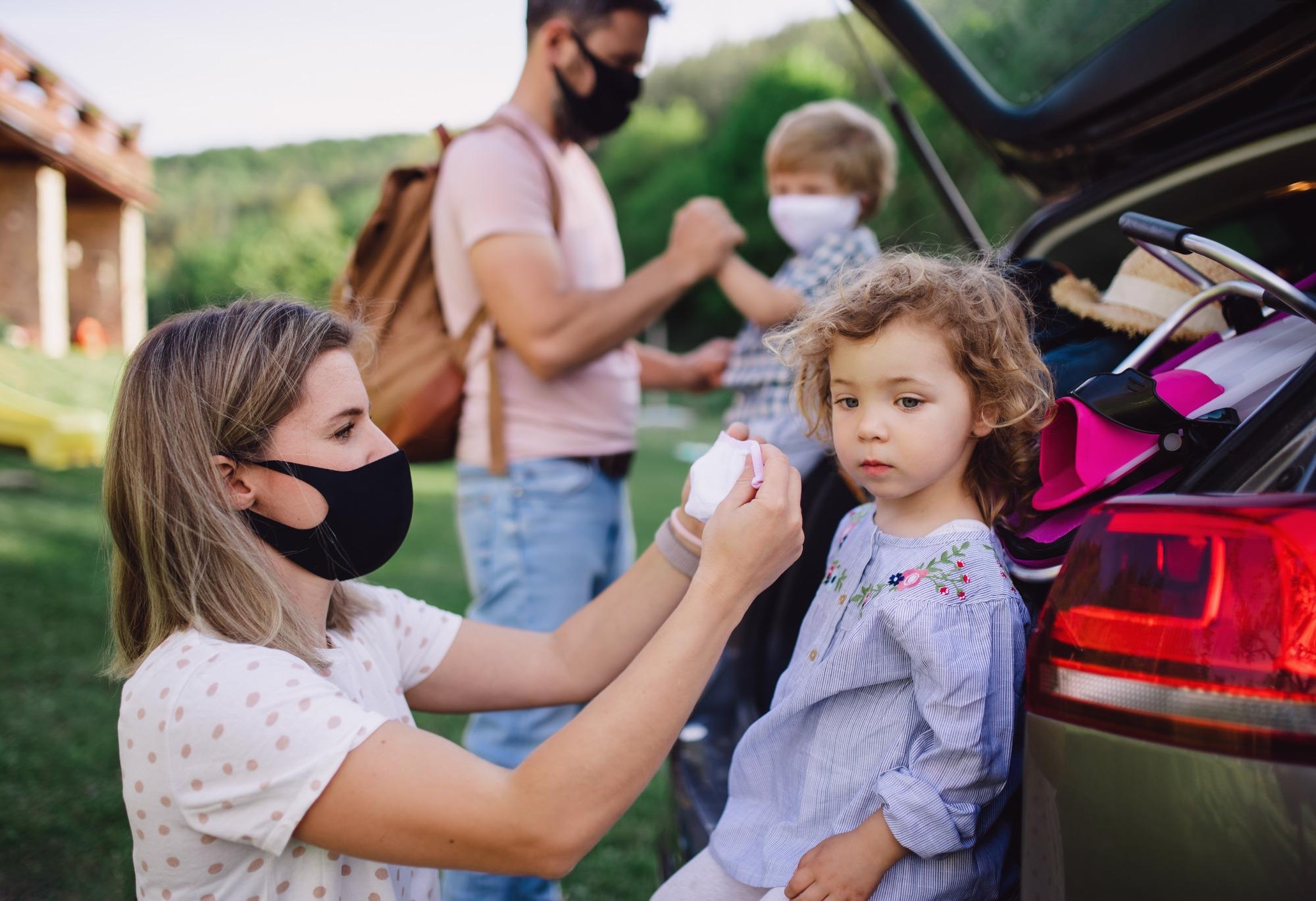The global outbreak of severe acute respiratory syndrome coronavirus 2 (SARS-CoV-2) has resulted in the coronavirus disease 2019 (COVID-19) pandemic and has claimed more than 6.26 million lives. Households represent a high-risk exposure setting for SARS-CoV-2 transmission, and the role of children in spreading the virus is not known.
A new study published in the International Journal of Infectious Diseases reviews the literature systematically. It performs a meta-analysis to assess the prevalence of pediatric COVID-19 in clusters of families, estimate the household secondary attack rate of children, and compare the transmissibility of SARS-CoV-2 in different age groups.

Study: The Role of Children in Household Transmission of COVID-19: A Systematic Review and Meta-Analysis. Image Credit: Halfpoint / Shutterstock
Background
Globally, people are still suffering from the fourth wave of the pandemic, brought on by the Omicron variant of SARS-CoV-2. Besides vaccination, breaking the chain of virus transmission is an effective way to control the outbreak. Research has shown that the household is possibly the highest-risk exposure setting and could have contributed to a steep escalation of COVID-19 cases even after the policy of social distancing and national lockdowns.
Infectious respiratory diseases such as influenza and measles are often transmitted from children to adults, but it remains unclear if SARS-CoV-2 is transmitted that way. Children could be responsible for the continuous spread of the virus, being asymptomatic carriers frequently. In fact, increased transmission by children has been observed with the emergence of new variants (e.g., Delta and Omicron). It is, therefore, essential to better understand the role played by children in household viral transmission.
A New Study
The Preferred Reporting Items for Systematic Reviews and Meta-Analyses (PRISMA) guidelines were followed to conduct this study. Two or more confirmed COVID-19 cases among individuals where the diagnosis of cases occurred within 2 weeks of each other, identified a household transmission cluster. The household contacts were not the family members who necessarily lived together. Instead, they were defined as close contacts who had unprotected contact with the index/primary case.
The secondary attack rate was used to empirically estimate the transmissibility of SARS-CoV-2. The number of household secondary cases divided by total household contacts was defined as the household secondary attack rate (SAR). Individuals under 18 years of age were defined as children.
A systematic retrieval was performed on PubMed and EMBASE from inception to 20 April 2022, using specific key search terms and excluding non-primary documents and modeling studies. Case analyses of household pediatric infections and meta-analysis on the SAR were the two parts in which studies were included. 47 and 48 articles were included for case-analysis and meta-analyses, respectively.
Key Findings
Researchers observed that primary and secondary child cases constituted only a small proportion of the household transmission in case analyses. Findings like this suggest that children are unlikely to be the main cause of infection in familial clusters. Consistent with previous meta-analyses, scientists observed lower household transmissibility in both pediatric index cases and secondary contacts, compared to adults. Based on these findings, children may be less susceptible to COVID-19 than adults.
A marked difference was found between children under 10 years and those over 10 years, and consistent with another study, scientists found higher transmissibility among younger children. However, owing to the limited number of studies, this difference lacked statistical power, hinting at the need for more future studies.
Scientists estimated the total pooled household SAR of child index/primary cases and secondary cases to be 0.20 and 0.24. Both in cases of child index cases and contacts, lower household transmissibility was observed compared to adults. Subgroup analyses of different variants and periods were performed and this revealed an increased household SAR in children (Omicron: 0.56, Alpha: 0.42, Delta: 0.35, Wild: 0.20). Further, when new variants dominated, no significant difference was found in household SAR between children and adults.
Key Limitations of the Study
A relatively insufficient and limited number of articles were included. Owing to this insufficiency, certain aspects of SAR were not well investigated, including the incubation and infectious periods. In some studies, the determination of the case status might be uncertain, especially in asymptomatic child index cases. Further, the epidemiological information is subject to bias as it was self-reported. Most importantly, significant unexplained heterogeneity constituted an important obstacle when interpreting the results. Researchers stated that the qualitative conclusions might be more reliable, compared to the quantitative results, which limits the generalizability of the results.
Conclusion
The current study documents that although children do not seem to be dominant in the household transmission, their transmissibility was increasing as new variants continue to emerge. Vaccination research and implementation in children is extremely important, given the severe complication risks that pediatric COVID-19 poses.